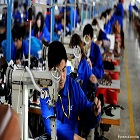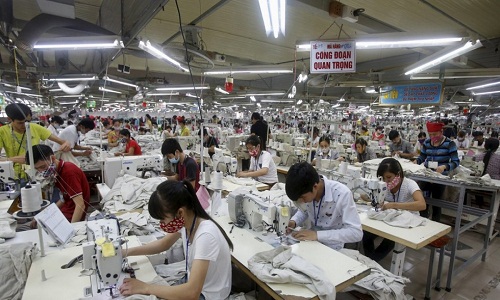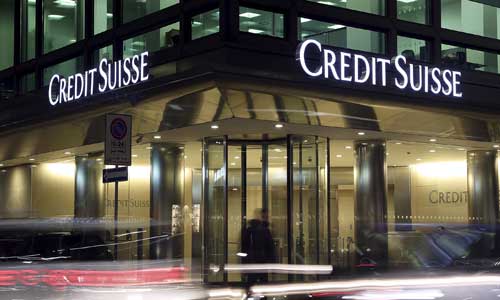FW
Bangladesh’s export earnings from the United Kingdom in the first seven months of the financial year 2015-16 witnessed a robust growth of 22.59 per cent. Export earnings growth remained negative in major markets like Belgium, Denmark, Italy, Netherlands and China while earnings witnessed encouraging growth in the United States and India. Earnings from China in the first seven months fell by 8.07 per cent.
Readymade garment exports to the UK grew by 26.10 per cent in the period. Bangladesh’s export is mostly demand-driven. Building supply side capacity is important to achieve demand-driven export growth in the global market.
Earnings from Germany remained almost the same in the first seven months while Belgium and Denmark witnessed a negative growth of 7.60 per cent and 4.43 per cent respectively. Earnings from Spain grew by 12.24 per cent while exports to France increased by 3.52 per cent.
Export earnings from Sweden remained almost the same while Italy and the Netherlands witnessed a 2.21 per cent and 1.86 per cent negative growth. Earnings from the US grew by 13.5 per cent while readymade garment exports to the US grew by 12.6 per cent. Earnings from India grew by 27.26 per cent while readymade garment exports to India grew by 15.11 per cent.
Bangladesh’s overall export earnings in the July to January period of financial year ’16 showed a 8.26 per cent rise.
Cotton prices in India will stay under pressure in financial year 2017 as volumes are unlikely to match Chinese demand. The continuation of Chinese direct subsidy-based policy and lower demand from spinning mills will keep domestic cotton prices under pressure.
Though Bangladesh, Pakistan and Vietnam have replaced China with India as a supplier, volumes are picking up at a slow pace and are unlikely to match Chinese demand. The operating margins will stay in the one to two percent range for ginners and traders, but the profit after tax margins may improve as sector companies reduce stocks and focus on receivables management.
The cotton industry is likely to revive moderately in financial year ’17 as exports to Vietnam, Pakistan, and Bangladesh grow. Vietnam is likely to increase its spindle capacity by 30 per cent. The local cotton production in Pakistan and Bangladesh is unable to keep pace with the increasing demand for apparels from these locations, providing opportunities to Indian exporters.
However, in view of China reducing imports significantly, and the moderating demand from Indian spinning mills, the demand for cotton will increase at a marginal rate and prices are unlikely to increase materially from the current levels.
French luxury goods company LVMH’s revenue increased 16 per cent in 2015. The fashion and leather goods sector, the company's largest division, registered particularly good performance. LVMH is the world’s largest luxury goods company. It owns brands like Christian Dior, Bulgari, TAG Heuer, De Beers, Louis Vuitton and Dom Perignon.
Louis Vuitton accounts for the bulk of the division’s sales and profits. Jewelry sales represent about a third of the group’s watch and jewelry unit. Its fashion brands Marc Jacobs and DKNY are in the middle of a thorough reorganisation. Weak euro and strong sales in LVMH’s wines and spirits division – home to brands including Moët and Hennessy – have more than made up for slower growth in the fashion business.
However, the Chinese market is posing a problem for global luxury brands. There been a fall in luxury buying in China. The country’s luxury sector has been hit by a slowing economy and a three-year-long anti-corruption and anti-extravagance political campaign. Apparently overly optimistic growth and consumption projections for China have misled foreign investors. Some of LVMH’s stores in China have closed down. And it just so happens that this is the most recognised high-end brand in China.
www.lvmh.com/
"The strong performance of garment exports in Vietnam, Bangladesh and Cambodia has not been replicated across all of Asia's economies that rely heavily on apparel earnings. China, the continent's behemoth in apparel exports, finally seems to be feeling the impact of rising domestic costs. Myanmar, an important emerging player in the sector, also had a mixed year, with strong growth in apparel export volumes being offset by a steep depreciation of the local currency, the kyat, resulting in a drop in the US-dollar value of garment earnings."

Garment exporters in the Asian region by and large outperformed their rivals across the globe. Most of these countries occupy the lower end of the apparel value chain but the RMG sectors stable performance has highlighted its importance in the development of these emerging markets. According to estimates, last year was not too good for many Asian exporters. However, while commodities and electronics exporters suffered, apparel sector did remarkably well.
Apparel exports outperform

During last year, apparel exports remained a bright spot for many countries. In Bangladesh for example, exports rose by 6.5 per cent on average in 2015, and in Vietnam they were up by 8 per cent. A key growth driver in both instances was the strong expansion in exports of apparel. Readymade garments accounted for 69.6 per cent of Bangladesh's exports in the first 11 months of 2015, according to data from Bangladesh Bank, and increased by 6.1 per cent year on year over that period in local-currency terms. Vietnam government data show textiles and garments made up 14.1 per cent of total exports in 2015 but they increased strongly at 9.6 per cent in the year.
In Cambodia too, apparel sector dominates exports but has faced challenges over the past couple of years due to labour unrest and surging wages. However, here too, the garment sector played a role in supporting overall exports in 2015. According to National Bank of Cambodia data, total garment exports were up by 10.6 per cent year on year in US-dollar terms in the first three quarters of 2015, aided by more stable industrial relations.
The strong performance of garment exports in Vietnam, Bangladesh and Cambodia has not been replicated across all of Asia's economies that rely heavily on apparel earnings. China, the continent's behemoth in apparel exports, finally seems to be feeling the impact of rising domestic costs. Myanmar, an important emerging player in the sector, also had a mixed year, with strong growth in apparel export volumes being offset by a steep depreciation of the local currency, the kyat, resulting in a drop in the US-dollar value of garment earnings.
Asia leads global garment market
US government's Office of Textiles and Apparel (OTA) data show that US imports of apparel products amounted to $103.8 billion for the first 11 months of 2015, and Asian suppliers accounted for roughly three-quarters of this total. China's share of the US market remains highest, at 38.8 per cent but it was down from 39.1 per cent in the same period of 2014. The share of apparel and garment imports from members of the Association of South-East Asian Nations (ASEAN), by contrast, edged up to 19.7 per cent in January–November 2015, from 19.2 per cent in the year-earlier period. This was largely owing to higher imports from Vietnam: other ASEAN nations such as Indonesia, Thailand and the Philippines lost market share.
The share of South Asian economies in US garment and textile imports was close to that of ASEAN, at 15.4 per cent. India's garment and textile exports to the US rose by 8.8 per cent year on year in January–November 2015, while those from Sri Lanka were up by 16 per cent. (Bangladesh's exports to the US, up by 11.7 per cent, were more in line with the overall domestic apparel export performance.) The region's biggest disappointment was Pakistan, where exports of both apparel and textiles to the US fell as demand shifted more to synthetic fibers.
Exchange rates may shake up things
Within Asia and other emerging markets, the big shifts in currency exchange rates in recent months will probably have a significant impact on apparel trade in the next few years. Margins in the sector tend to be narrow, and currency movements can have a significant effect on national competitiveness.
However, many of the underlying trends evident in 2015 look set to continue. China's rising domestic costs are unlikely to be fully offset by the depreciation of the Yuan expected to in 2016. Garment sectors in India and Sri Lanka will continue to struggle with lackluster EU demand in the next few years but their rising sales in the US will provide some offsetting support. The rise of apparel producers in Bangladesh and Vietnam has been evident for several years, and there is no sign that their share of the global market will peak in the near future.
However, mid-tier producers in countries like Cambodia, Indonesia, the Philippines, Thailand and Pakistan will have to do more to match their rivals in this increasingly tough market. Prospects for the garment sector in all five countries look fragile, particularly as new and even cheaper countries like Myanmar emerge as potential sites for production. Apparel exports may be holding up better than those of commodities and electronics, but competition in the sector remains brutal.
Catering mainly to traditional markets like the US and Europe, Tirupur-based Alfine Knit, is now exploring new markets like Russia and Australia. For this, the company is taking part in sourcing fairs. It has a decent number of clients from several countries across the world. Very strong in knits as well as in woven men’s wear, Alfine Knit started doing business with South Africa last year. Supplying mainly to chain stores and private brands, it has a total of 800 stitching machines to work with, and out of them 600 are generally used for woven products.
In this season, the brand is focused on washes and indigo jersey. The company aims at around 15 per cent growth each year and has succeeded to that effect through the past 10 years. Alfine offers value-added products. In terms of capacity, it can offer 10,000 pieces of basic products per day. The company has also invested in printing and dyeing.
The brand’s strength is in its diversity and complicated products in terms of design or product development. It has an office in New York and works with both American and Indian designers.
The parent company is the Chennai-based Jak industries.
India has started a probe into the alleged dumping of spandex yarn from China, South Korea, Taiwan and Vietnam. The probe will determine the existence, degree and effect of the alleged dumping and recommend the amount of anti-dumping duty which if levied would be adequate to remove any injury to the domestic industry.
Elastomeric filament yarn is commonly referred to as spandex or elastane. In common parlance, these yarns are also referred to as Lycra, even though Lycra is a specific brand name. Spandex yarn is mainly used to make garments that require great comfort and fit. It finds applications in manufacturing of hosiery, swimsuits, aerobic or exercise wear, ski pants, golf jackets, disposable diapers and waist bands, among others.
Countries initiate an anti-dumping probe to determine whether their domestic industries have been hurt because of a surge in cheap imports of any product. As a counter measure, they impose duties under the multilateral regime of the WTO.
The duty is aimed at ensuring fair trading practices and creating a level-playing field for domestic producers vis-a-vis foreign producers and exporters resorting to dumping of goods at below-cost rates. The complaint of dumping was lodged by Indorama Industries.
Due to damage by rains, low cotton prices, and high cost of inputs which led to lower area under cotton cultivation necessitating import of about $4 billion worth of cotton for domestic consumption in Pakistan according to Dr Khalid Abdullah, Cotton Commissioner, Pakistan. The current cotton output of Pakistan is 10.85 million bales against the estimate of 15.49 million bales.
Meanwhile the sowing target of cotton was also missed as it was planted on 2.946 million hectares against the target of 3.122 million hectares. Cost of inputs including seeds, pesticides, fertilisers and sprayers have increased from 15 to 20 percent. In some cases, low quality seeds, pesticides and fertilisers were also supplied to the growers with disastrous consequences on output.
According to the Cotton Commissioner, Punjab was projected to produce 10.5 million bales this year, but the projection was revised downward to 7.4 million bales following erratic rainfall in some areas and attack of pink bollworm and whitefly. Sindh was expected to produce 4.4 million bales however the projected estimate was revised downward to 3.4 million bales after pink bollworm and whitefly attacks. The Cotton Commissioner further stated that the low price of the produce also resulted in low farmers’ interest in sowing the crop. Incidentally, the price of cotton remained between Rs 1,800 to Rs 2,300 per 40 kg in August and September and this was too low compared to the previous year’s which led to lower area under cultivation then projected.
The Delhi High Court refused to issue a stay order to the Centre's order enabling a government-appointed panel to fix the maximum sale price of genetically modified (GM) Bt cotton seeds. The judge issued notice to the government and sought its response by March 4 on the plea of Mahyco Monsanto Biotech India challenging the Agriculture Ministry's January 27 order giving powers to the committee to fix license fee payable by sub-licensees for GM technology.
The HC clarified that ‘any action taken by respondent (Centre) in pursuance to the aforesaid order shall be subject to further orders.’ According to the January 27 order, the panel was given powers to fix the license fee payable by sub-licensees to Mahyco and suggest the licensing guidelines and format for all GM technology licensing agreements between them inter se,’ the court noted in its order.
Mahyco’s plea was that by issuing the order, the government was trying to ‘unfairly regulate and expropriate’ its rights in respect of valuable intellectual property and freedom to negotiate and contract the terms of its licensing agreements with its sub-licensees. Seeking stay, it contended that its technology is its patent and is governed by the Patents Act, 1970 and thus, the government cannot fix the price at which the company will supply its technology to seed manufacturers.
Mahyco is a joint venture between US agriculture company Monsanto and Maharashtra Hybrid Seeds Company which sublicenses biotechnology to seed companies.
"A recent Credit Suisse report projected around 8,600 brick-and-mortar stores will be forced to shut in 2017. While retail store visits have drastically reduced in recent years, it is about time for companies to leverage their store presence as a driver for customer acquisition in the digital space. However, in a stark contradiction to this, another research by Smarter HQ found 50 per cent of millennials actually prefer to go to a physical store as their primary means of shopping. In such a situation, a seamless omnichannel presence is what retailers should aim at."

A recent Credit Suisse report projected around 8,600 brick-and-mortar stores will be forced to shut in 2017. While retail store visits have drastically reduced in recent years, it is about time for companies to leverage their store presence as a driver for customer acquisition in the digital space. However, in a stark contradiction to this, another research by Smarter HQ found 50 per cent of millennials actually prefer to go to a physical store as their primary means of shopping. In such a situation, a seamless omnichannel presence is what retailers should aim at. But what are the real issues plaguing the fashion retailing? Let’s find out…
Reducing footfalls

Currently, there are about 1,200 malls in the US, which are predicted to fall to about 900 in a decade. A research by Cowen and Company reveals between 1970 and 2015, the number of malls in the country grew twice the rate of the population. Add to that, the US also has one of the highest shopping space per capita in the world — 40 per cent higher than Canada, five times more than the UK, and 10 times that of Germany’s. Besides having omnichannel presence with features such as Buy Online and Pick Up in Store, these companies should also renegotiate leases and optimise their store footprint by closing underperforming stores.
Low margins in e-commerce
On the other side of the spectrum, increased expenses in delivery and marketing are eating up e-commerce retailers’ margins big time. Towards this, retailers need to undertake other cost-saving measures to reduce additional margin pressure. This can be reducing the markdowns, as sales of full-price items would have higher margins. A highly promotional environment has also harmed many apparel retailers, making customers accustomed to discounted merchandise. But it isn’t going to be easy either with the onset of holiday season, people tend to wait for promotional offers all the more.
Improving speed to market is another alternative just as H&M, Zara, and Uniqlo have been doing. These retailers move styles from the runway to the stores within weeks, constantly evolving their assortment and keeping their products fresh. Analysis conducted by John Thorbeck, chairman, Change Capital LLC, and Professor Warren H Hausman of Stanford University indicate retailers can increase their profits by as much as 28 per cent and market capitalisation by up to 43 per cent if they are able to reduce their lead times and respond faster to changing consumer demand. In the long term, American retailers will be unable to compete with fast-fashion retailers if they don’t address this issue.
Mexico is an important center for worldwide denim fabrics and garments. Its proximity to the US benefits of trade agreements and strategic location between the two Americas has contributed to its growth as a textile and apparel centre. The country is a large exporter of denim apparels to the US, next only to China.
In fact, many brands have shifted their denim business manufacturing from China to Mexico. For one, denim fabrics from Mexico are considered superior to Chinese fabrics. There is a feeling the water is different in Mexico, the resin used is different. There is a lot more hand detail versus manufacturing details. One example is when people are trying to get a brushed out thigh on a pair of denim. In China it’s done by using a sand blaster and then go to the next pair. In Mexico the way is to take a wire brush and hand brush them out so that it’s possible to get highs and lows that look a bit more natural. But overall it’s the method of spending a little more time and the hand work in stressing or washing denim that is not done in mass production at a Chinese facility. Everything looks the same but in Mexico the processing and laundry are more artisan.
But a key advantage to manufacturing in Mexico is shorter lead times, which allows brands a lot of flexibility to change orders as business fluctuates.












